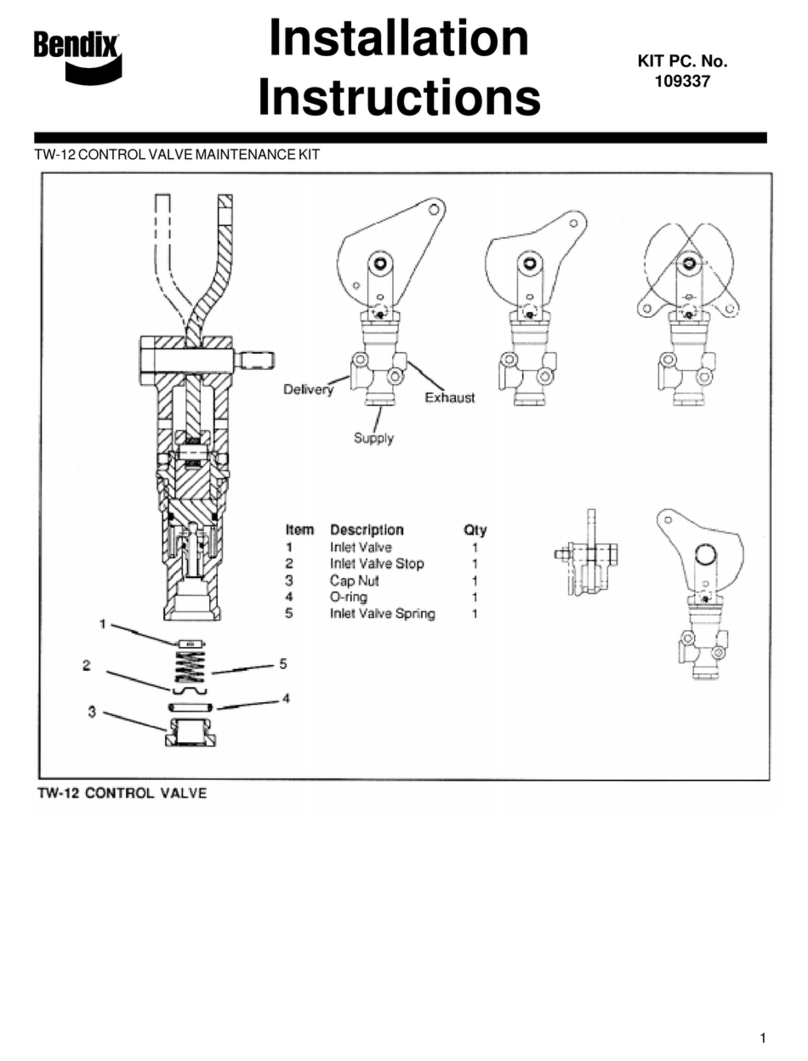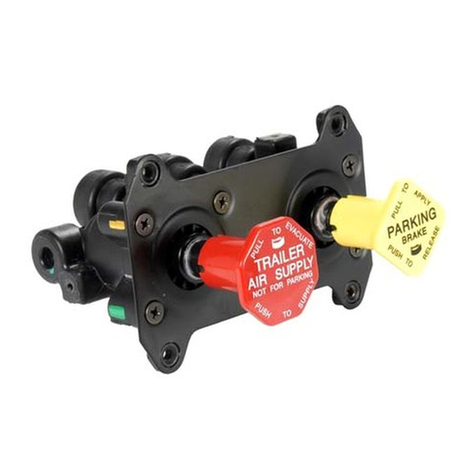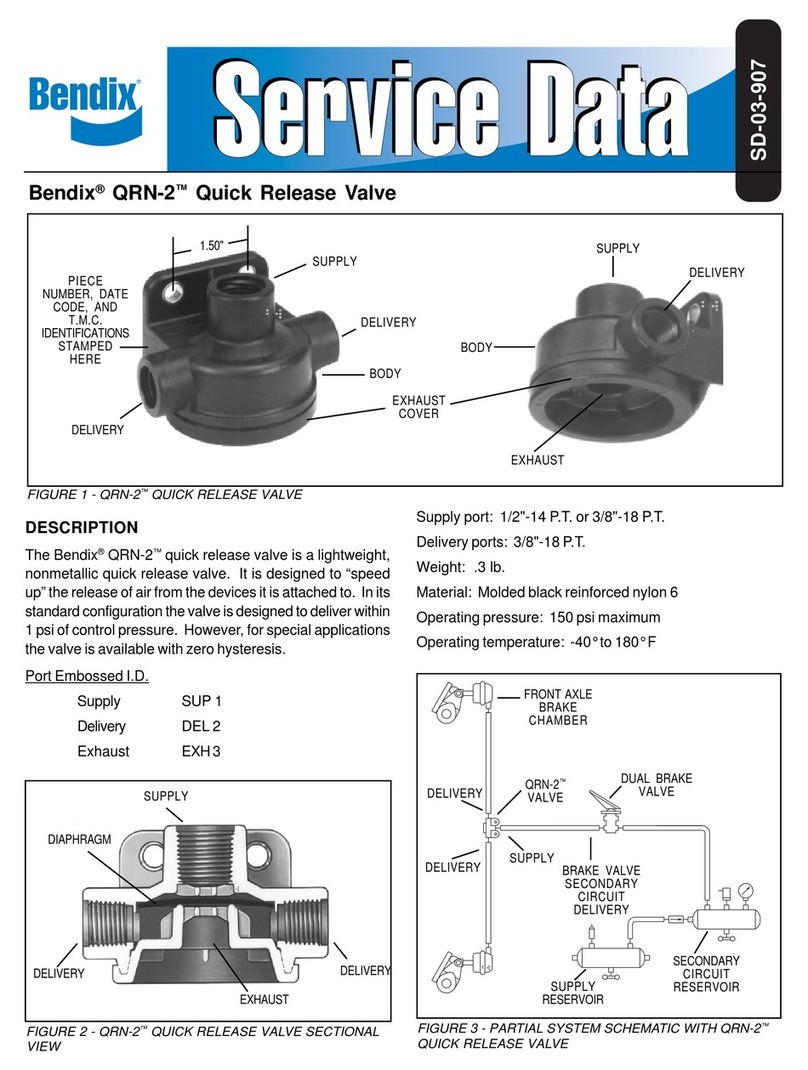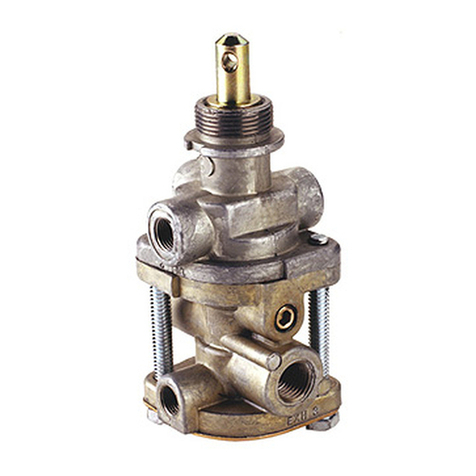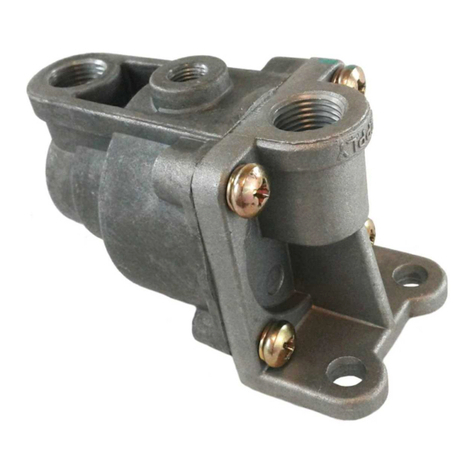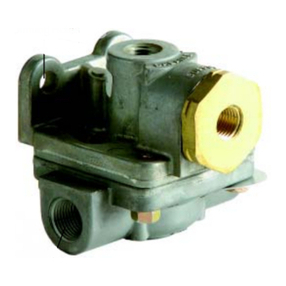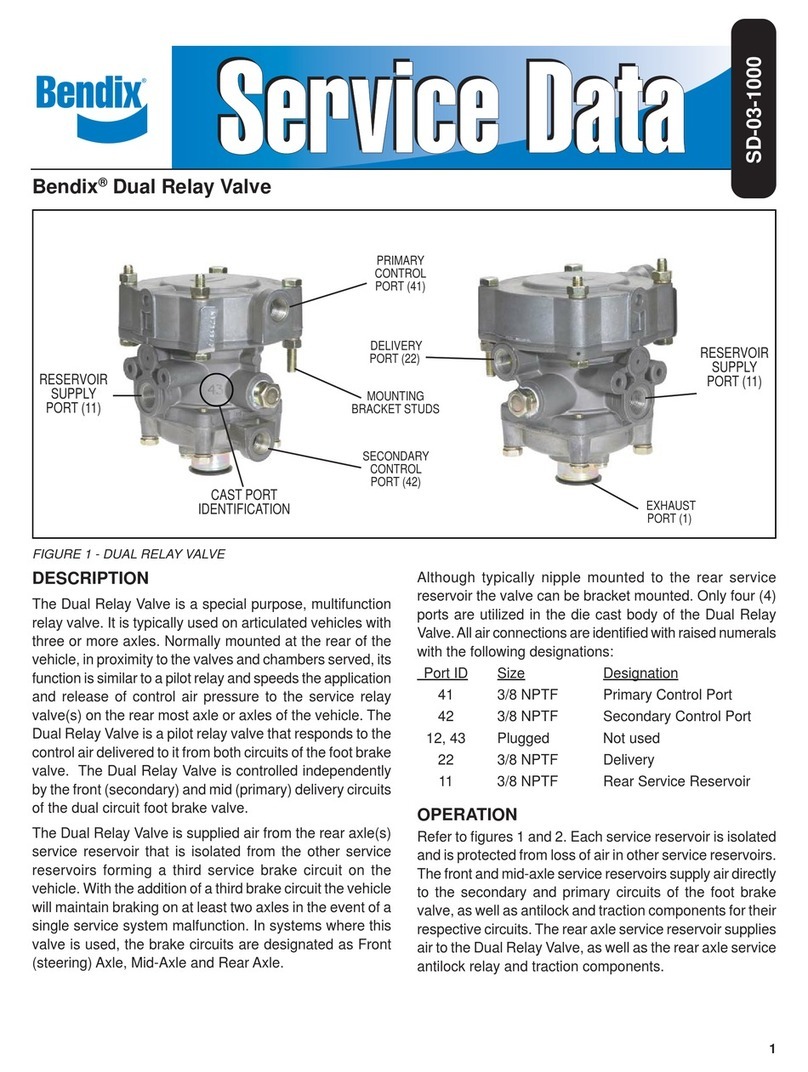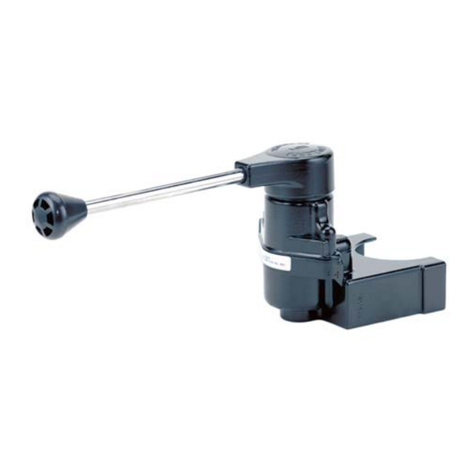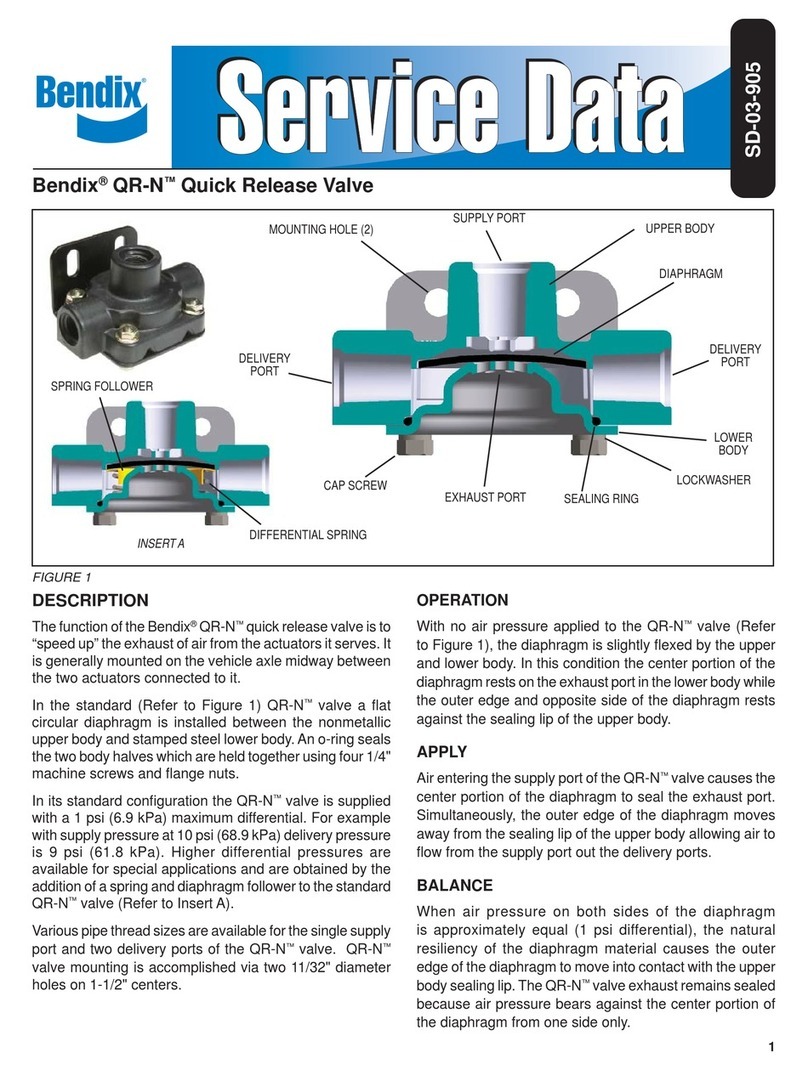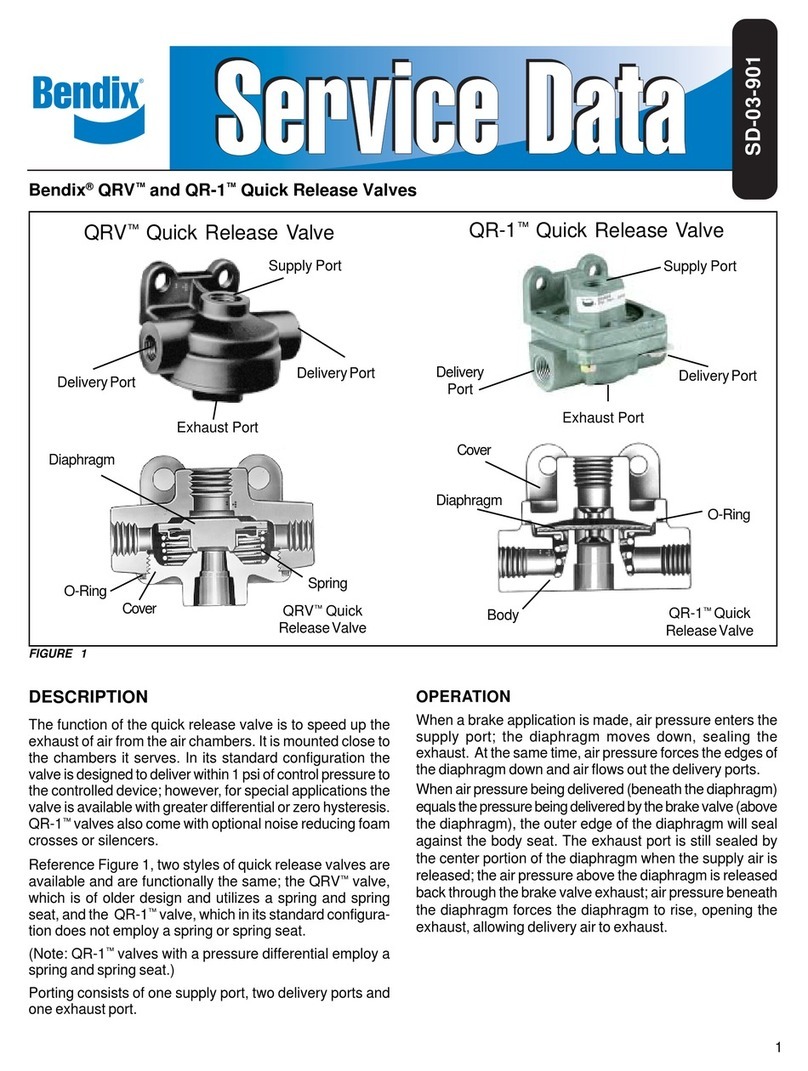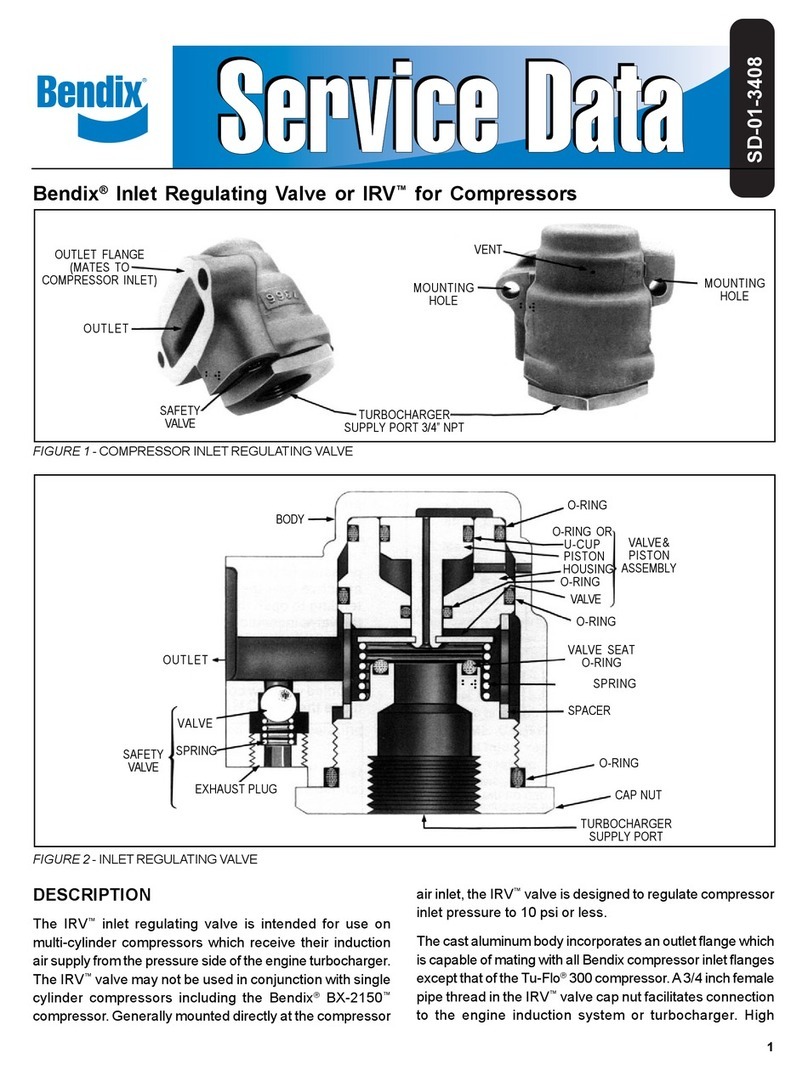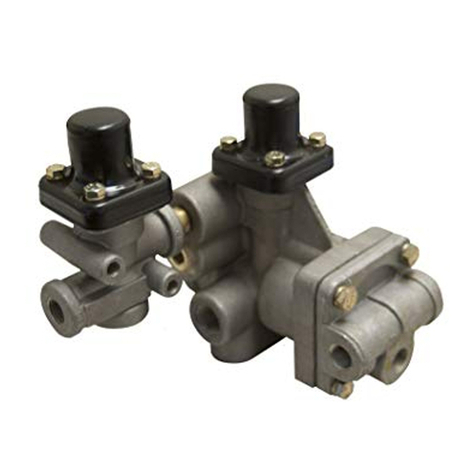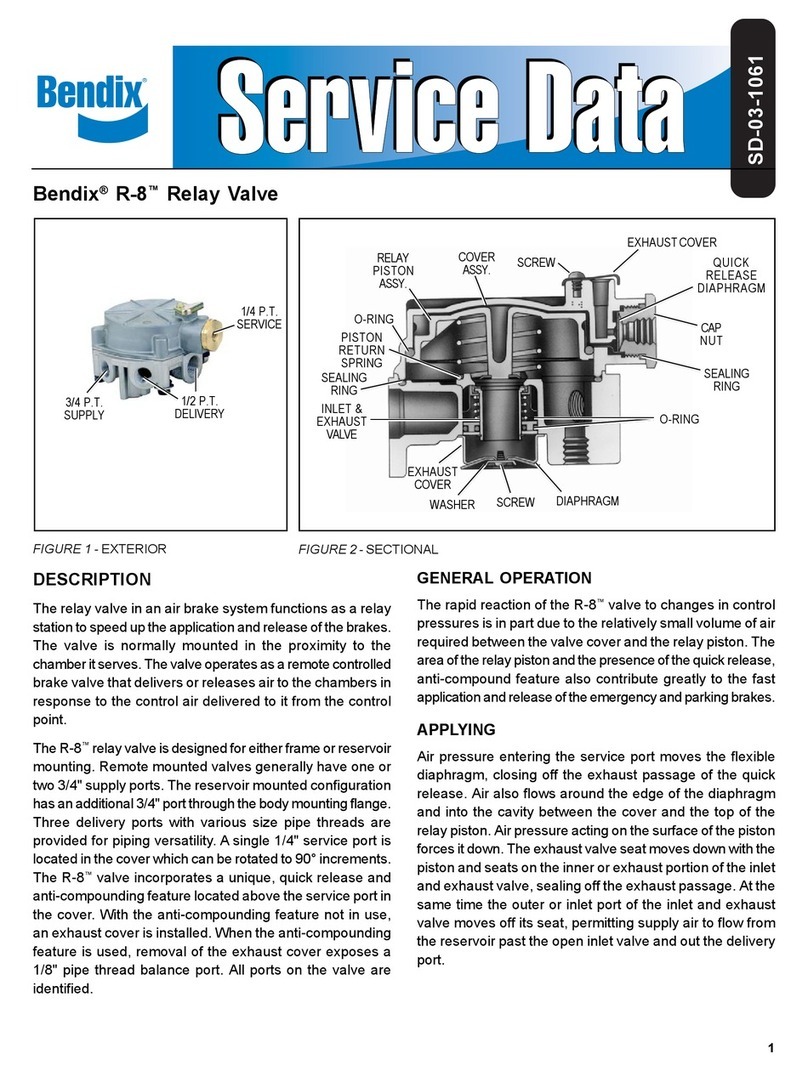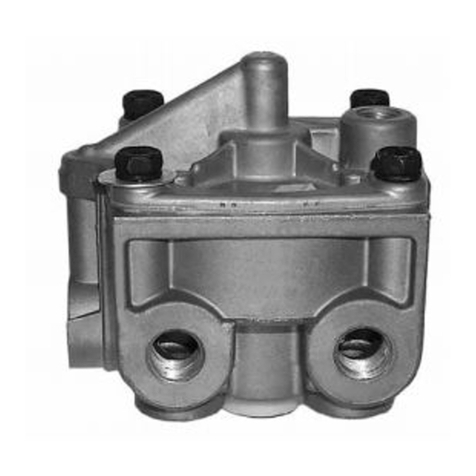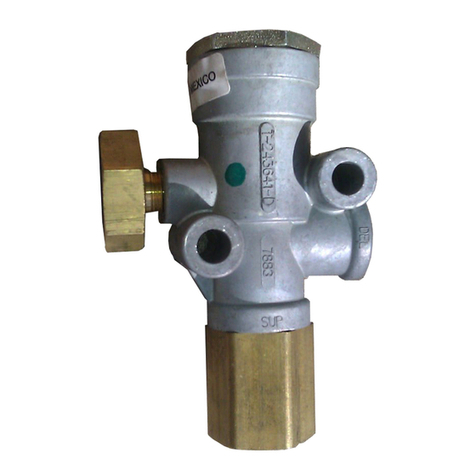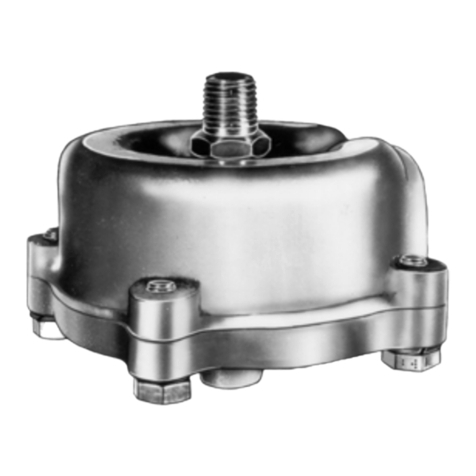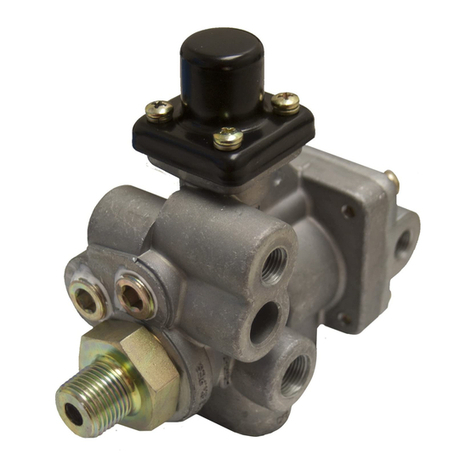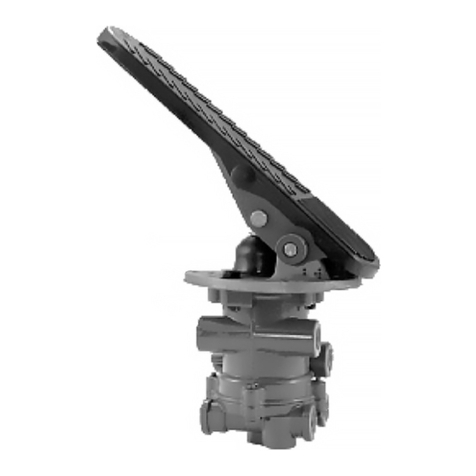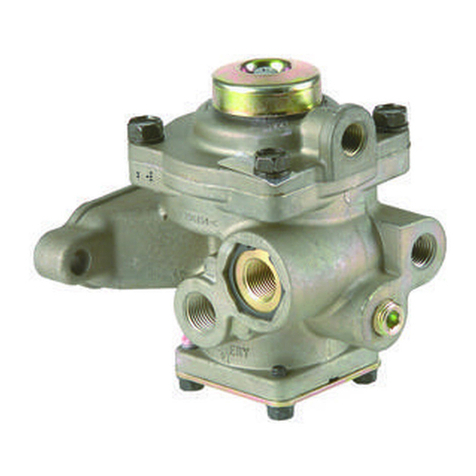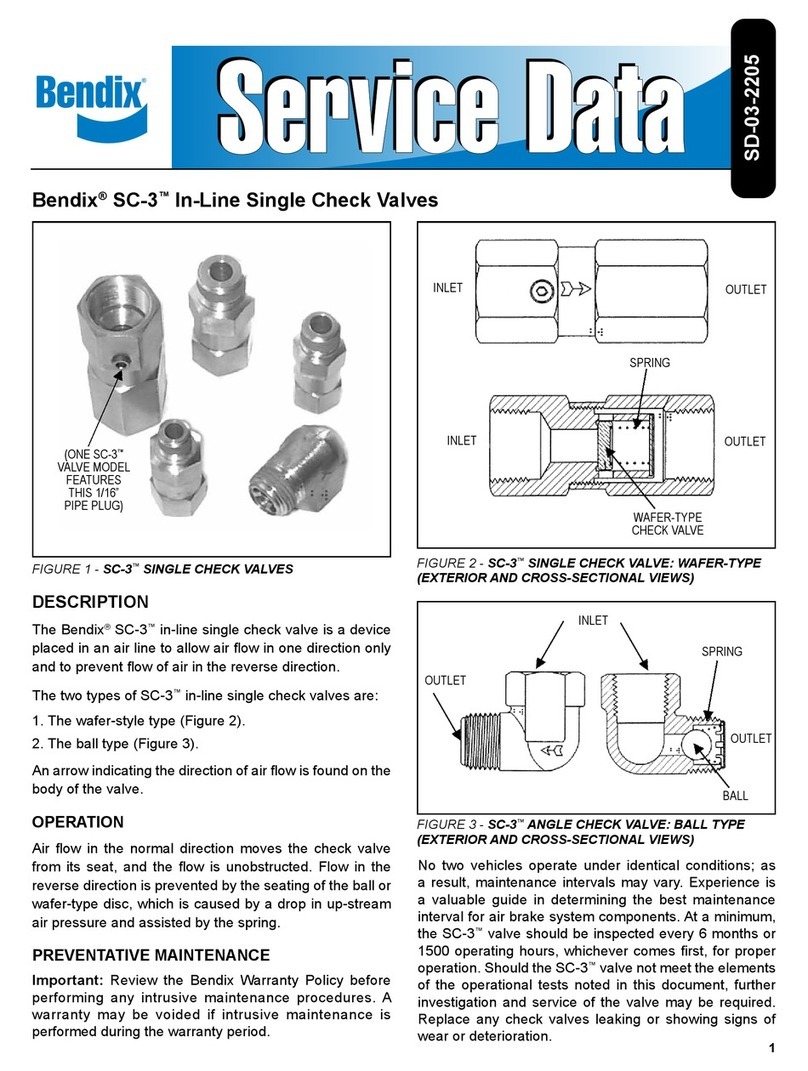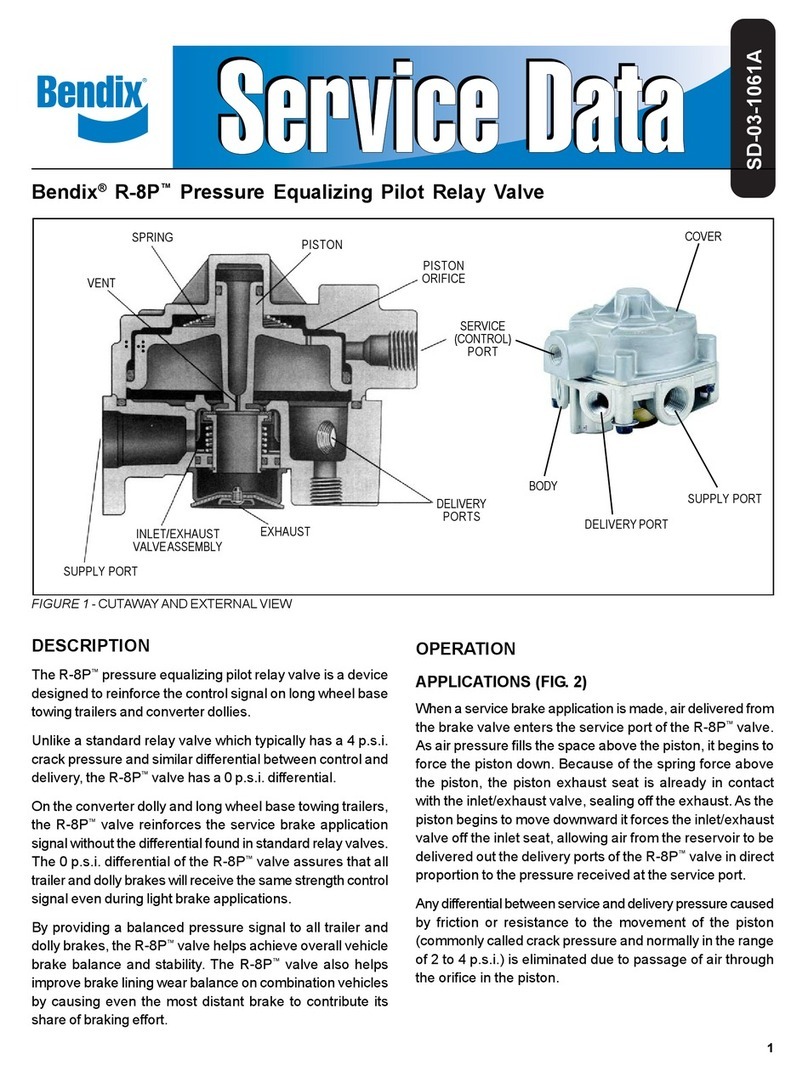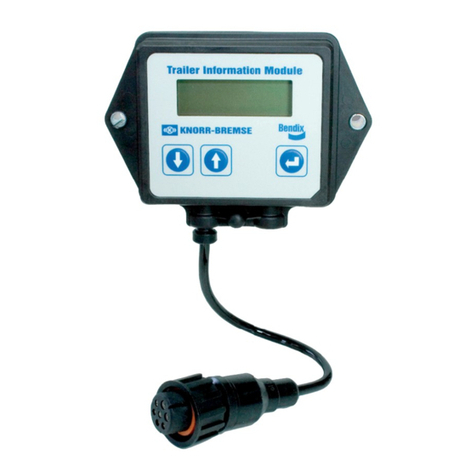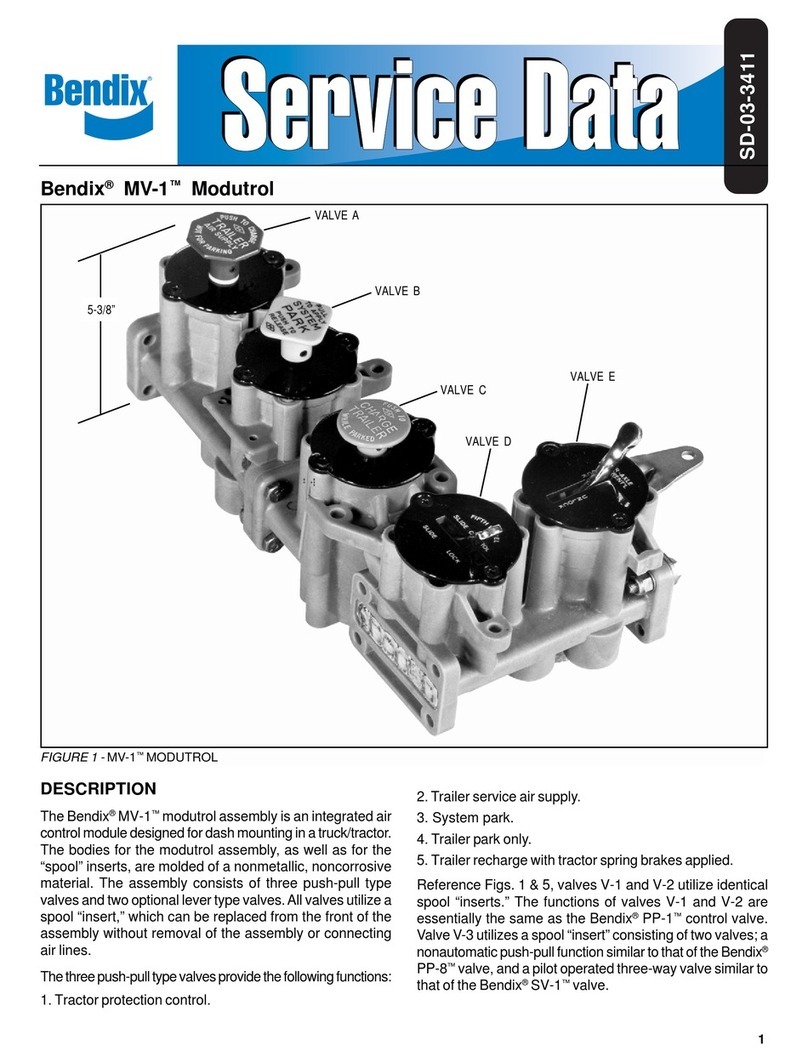
1
®
DESCRIPTION
The safety valve protects the air brake system against
excessiveairpressurebuild-up.Thevalveconsistsofaspring
loaded ball valve subjected to reservoir pressure which will
permit air to exhaust reservoir pressure to atmosphere if
reservoirpressure risesabove thevalves pressure setting,
which is determined by the force of the spring.
OPERATION
Toillustratetheoperationofthesafetyvalve,weshallassume
that the governor cutout pressure is set at 125 psi.Asafety
valve with a setting of 150 psi could then be used. Should
system pressure rise to approximately 150 psi air pressure
would force the ball valve off its seat, and allow reservoir
pressure to vent to atmosphere through the exhaust port in
the spring cage.
When reservoir pressure decreases sufficiently, the spring
force will seat the ball check valve, sealing off reservoir
pressure.This wouldoccur atapproximately135psiforthe
150psivalve.Itisimportanttonotethatthedesiredpressure
setting of the safety valve is determined by the governor
cutout pressure. The opening and closing pressures of the
safety valve should always be in excess of governor cutout
pressure setting. The pressure setting is stamped on the
lowerwrench flatofthevalve.
Normally, the safety valve remains inoperative and only
functionsiffor anyreasonreservoirpressure risesabovethe
settingof thevalve. Constant“poppingoff”orexhaustingof
thesafetyvalvecanbecausedbyafaultysafetyvalve,faulty
governor, faulty compressor unloading mechanism, or a
combination of any of the preceding.
PREVENTIVE MAINTENANCE
Important: Review the Bendix Warranty Policy before
performinganyintrusivemaintenanceprocedures.Awarranty
maybe voidedif intrusivemaintenance isperformed during
thewarranty period.
No two vehicles operate under identical conditions, as a
result, maintenance intervals may vary. Experience is a
valuableguide indeterminingthe bestmaintenance interval
for air brake system components.At a minimum, the safety
valveshouldbe inspectedevery6monthsor1500operating
hours, whichever comes first, for proper operation. Should
the safety valve not meet the elements of the operational
testsnotedinthisdocument,furtherinvestigationandservice
ofthe valvemay berequired.
OPERATING AND LEAKAGE CHECKS
OPERATING TEST: With air pressure in the system, pull
theexposed endof thevalvestemremovingthe springload
fromtheballcheckvalve.Airshouldexhaustfromthevalve’s
exhaust port. Release the stem, the air flow should stop.
Failure of valve to pass operating test would indicate the
valve should be disassembled, cleaned and rebuilt. (See
“Disassembly and Assembly” section). If adjustment is
necessary, see “Adjustment” section.
LEAKAGE CHECK: Coat the exhaust port with soap
solution.Aleakage ofa 1”bubble in5 secondsis permitted.
Excessiveleakage indicatesdirt invalve,faultyballvalve or
seat. Valve should be disassembled, cleaned and rebuilt.
(See “Disassembly and Assembly” section).
REMOVING AND INSTALLING
REMOVING
1. Block wheels or otherwise secure vehicle and drain
reservoirs.
2. Usingwrenchflatclosesttoreservoir,unscrewvalvefrom
reservoir.
INSTALLING
Safety valve should be installed in same reservoir that
compressor discharge line is connected to. Install in a
convenient location in a top port of the reservoir. If safety
valveisinstalledhorizontally,exhaustportshouldpointdown,
stemof thevalve shouldfacerearofvehicle.
PRESSURE
SETTING
150 PSI
EXHAUST
PORT
ST-3™
VALVE
ST-1™
VALVE
SD-03-1901
Bendix®ST-1™& ST-3™Safety Valve
